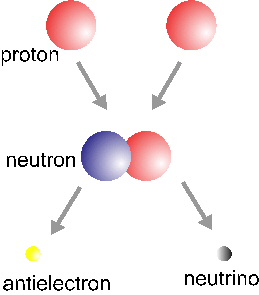In the basic Hydrogen fusion cycle, four Hydrogen nuclei (protons) come together to make a Helium nucleus. This is the simple version of the story. There are actually electrons, neutrinos and photons involved that make the fusion of Hydrogen into Helium possible.
the most important thing to remember is the fusion cycle can releases power and it can get the energy from our sun. that is why we feel hot on summer days.

Nuclear fusion occurs when two atoms fuse together (usually hydrogen) to form a heavier atom (helium), and releasing a vast amount of energy in the process. “This process can only occur at incredibly high temperatures, such as the center of a star (such as our Sun). Every second, the Sun fuses 500 million tons of hydrogen into helium, releasing about 5 million tons of gamma rays that eventually heat and illuminate Earth.” 
Basically, to keep fusion going you need to sustain a temperature of around 11 million degrees Celsius, which requires a huge amount of electricity. Fusion chambers are usually lined with heat-resistant carbon tiles in an attempt to reduce wastage, but the problem is that protons and neutrons escaping from the fusion reaction hit the wall, cool down, and then bounce back into the reaction, reducing the temperature. Electricity must then be used to increase the temperature back to 11 million Celsius.

http://www.extremetech.com/extreme/123837-500mw-from-half-a-gram-of-hydrogen-the-hunt-for-fusion-power-heats-up/2
http://www.windows2universe.org/sun/Solar_interior/Nuclear_Reactions/Fusion/Fusion_in_stars/H_fusion.html





